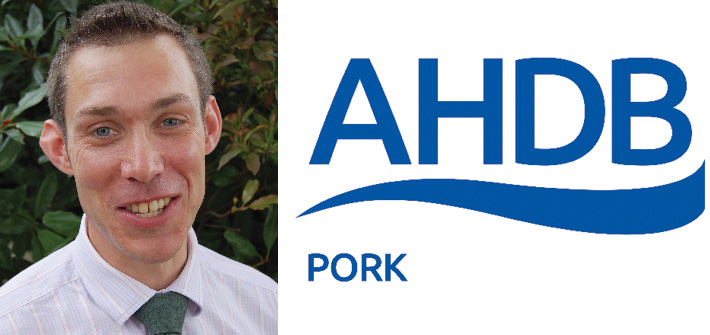I wrote this month’s column sitting in Defra’s Noble House cafe, after meeting Graeme Cooke, the new Deputy Chief Veterinary Officer. He’d only been in the post for a week or so, but there was plenty of pork industry information to update him on.
The aim of the meeting was to look at the current trade situation going into Brexit. Peter Hardwick, from the AHDB exports team, provided insight in this area, while I talked about animal health concerns.
Meetings like this are an opportunity to clarify key areas of concern. However, senior government officials are often short on time and need the issues distilled into salient points.
The Livestock Identification Programme was an area I wished to discuss, as Defra is in the process of investigating a new movements system for livestock within the UK, combining all current species onto one system. There’s some sense in this as it’s likely to save on running costs. It will also bring a much-needed update of some of the services for other livestock sectors that aren’t fully digitalised or need some improvement.
Digital services, such as livestock movement systems, are becoming increasingly important as a tool for the trade, as they can be used to demonstrate secure supply chains by proving the provenance of meat ‘from farm to fork’. They also provide assurance to other countries that, in the event of a disease outbreak, it can be contained and effectively eliminated.
“Digital services can be used to demonstrate secure supply chains by proving the provenance of meat ‘from farm to fork'”
However, these systems pique my interest more in terms of the ‘value added’ information that they provide. Over time, AHDB Pork has accumulated a portfolio of ‘value added’ databases and information services linked to the movement system, ranging from slaughterhouse data to the electronic medicines book
(eMB-Pigs).
When it comes to trade, these services add up because they demonstrate a holistic and auditable industry, which can be branded as high quality and trustworthy.
Recent events have demonstrated how data recording and quantitative evidence from such systems is becoming increasingly important to defend the industry position within national and international government.
Take, for example, the recent positioning of the Committee for Medicinal Products for Veterinary Use (CVMP) on potentially removing the market authorisation of zinc oxide. The CVMP and EU Commission only consider scientific or real-time data, and the decision they make in early spring (either overturning the original outcome of the ZnO review, or removing its licence), will be as a direct result of evidence.
In the same way, all the data that has been uploaded onto the new eMB-Pigs system for 2015 and 2016 will provide evidence to the Government that the industry is being responsible with its use of antibiotics. As the UK will soon be setting sail into unchartered Brexit waters, the ability for us as an industry to demonstrate and quantify the quality, welfare and traceability of our pork will put us in a much better place to meet the demands of both international trade and domestic government.
Martin Smith is AHDB Pork’s veterinary team manager, specialising in disease prevention




